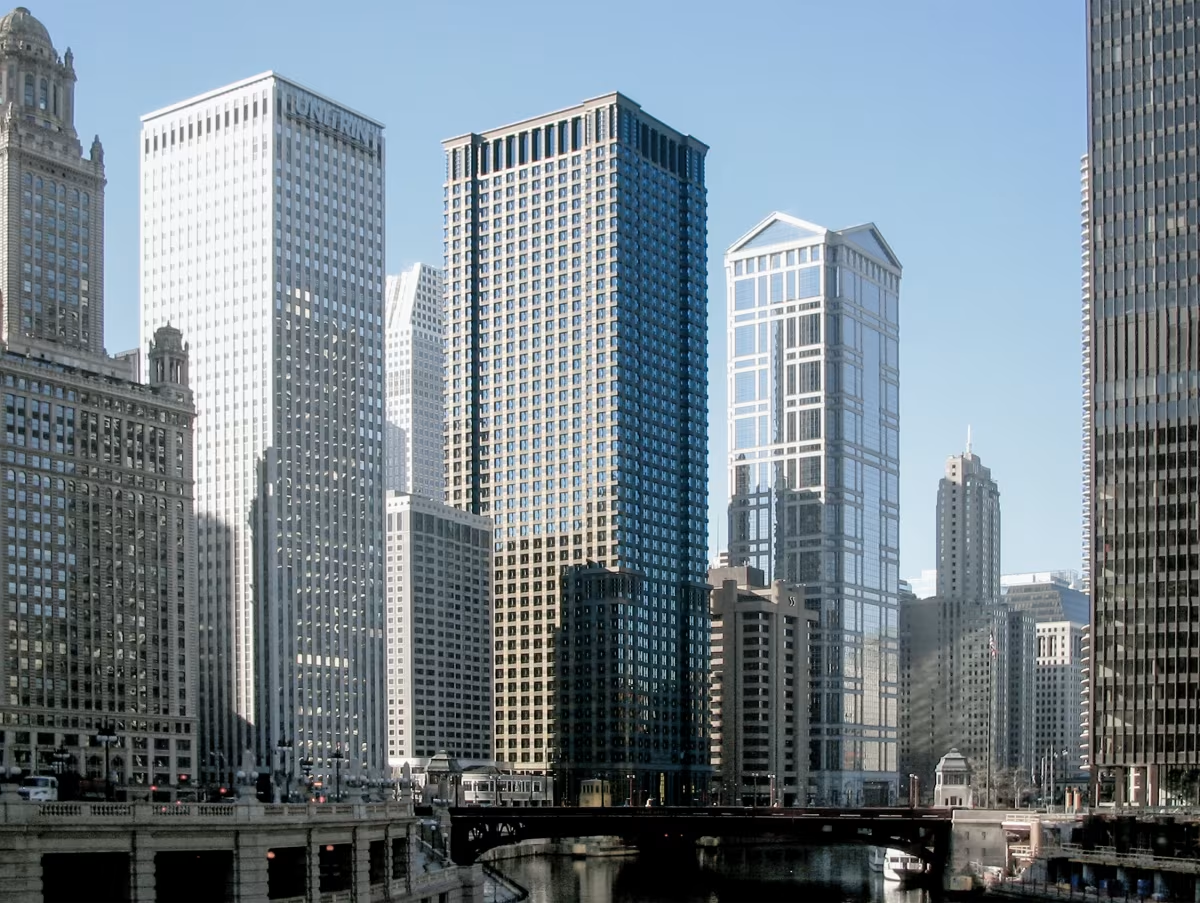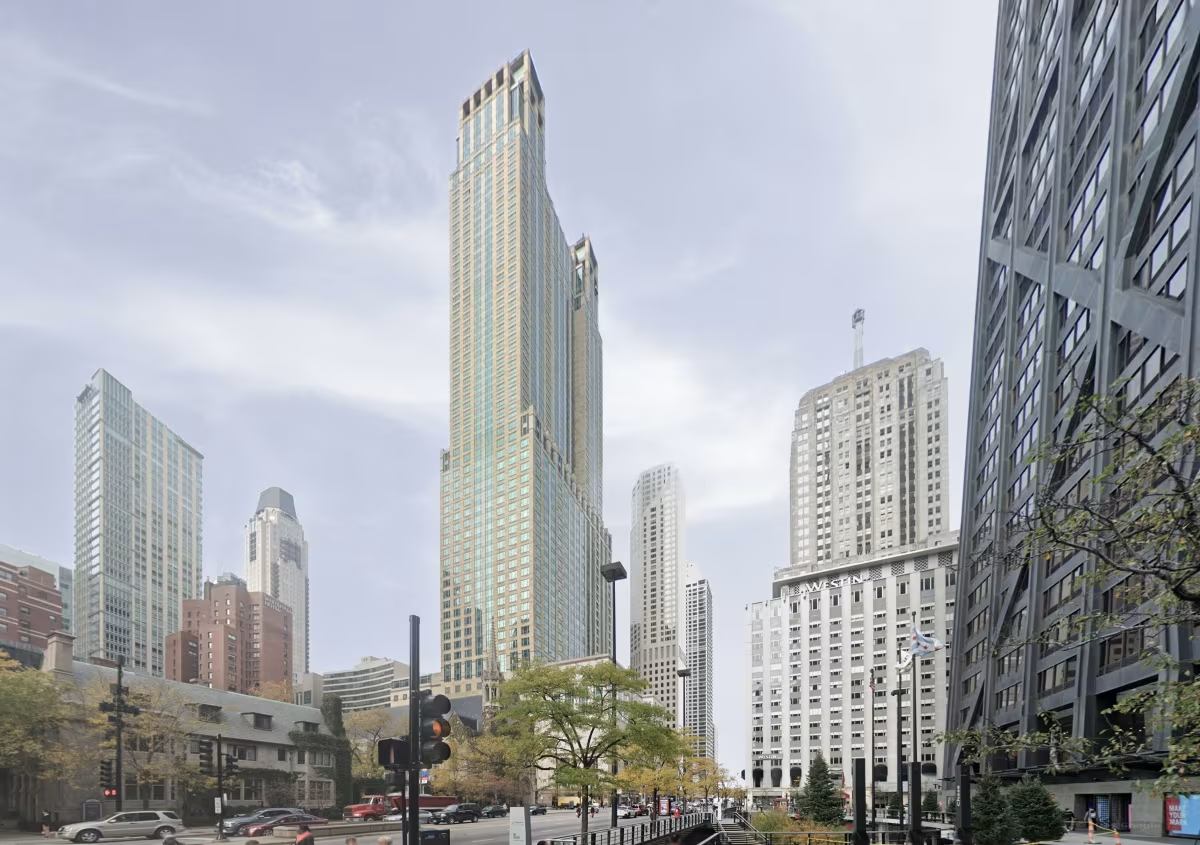Leo Burnett Building vs 900 North Michigan Building


Comparing the Leo Burnett Building and the 900 North Michigan Building is interesting because they both stand in Chicago, IL, and were completed in the same year, but they were designed by different architects.
This offers a unique glimpse at how rival designers approached projects in the same city during the same era.
Height & Size
The 900 North Michigan Building is clearly the larger tower of the two, both in terms of height and number of floors. It rises to 871ft (265.5m) with 66 floors above ground, while the Leo Burnett Building reaches 636ft (194m) with 46 floors above ground.
Of course, each project may have faced different briefs or regulatory constraints, which we don't really know about and could also explain the outcome.
Architectural Style
Both the Leo Burnett Building and the 900 North Michigan Building were designed in line with the aesthetic conventions of the Postmodernism style.
At the time, this style was at the height of its popularity. So both Roche Dinkeloo & Associates and Kohn Pedersen Fox Associates followed what was in many ways expected of them, producing designs that fit comfortably within contemporary architectural norms, rather than breaking with convention.
Uses
The 900 North Michigan Building follows a mixed-use model, combining retail, commercial, residential and hotel. In contrast, the Leo Burnett Building has remained primarily commercial.
The 900 North Michigan Building incorporates a 5-star hotel with rooms. More information is available at the official website.
The 900 North Michigan Building offers 106 residential units.
Both towers provide significant parking capacity, with Leo Burnett Building offering 113 spaces and the 900 North Michigan Building offering 1330.
Structure & Facade
The two buildings opted for different structural and facade solutions.
The Leo Burnett Building uses a Trussed Tube In Tube system, which combines a central core with a perimeter tube reinforced by diagonal bracing, while the 900 North Michigan Building uses a Frame system, that relies on a regular grid of columns and beams to sustain its weight.
And when it came to the facade, the Window Wall went with a Window Wall facade, which uses panels fitted between floor slabs, leaving slab edges visible, while the 900 North Michigan Building opted for a Curtain Wall facade, that uses a lightweight glass curtain wall hung from the structure.
| Leo Burnett Building | 900 North Michigan Building | |
|---|---|---|
| Roche Dinkeloo & Associates | Architect | Kohn Pedersen Fox Associates |
| 1986 | Construction Started | 1987 |
| 1989 | Year Completed | 1989 |
| Postmodernism | Architectural Style | Postmodernism |
| Commercial | Current Use | Mixed |
| 46 | Floors Above Ground | 66 |
| 4 | Floors Below Ground | 1 |
| 194 m | Height (m) | 265.5 m |
| Trussed Tube In Tube | Structure Type | Frame |
| A Concrete Core And Steel | Vertical Structure Material | Steel And Concrete |
| Concrete And Steel | Horizontal Structure Material | Reinforced Concrete |
| Yes | Facade Structural? | Yes |
| Green Granite, Glass, Steel | Main Facade Material | Limestone, Glass |
| The John Buck Company | Developer | Urban Retail Properties |
| Cohen Barreto Marchertas | Structural Engineer | Alfred Benesch & Company |
| IL | State | IL |
| Chicago | City | Chicago |
| 35 West Wacker Drive | Address | 900 N Michigan Avenue |